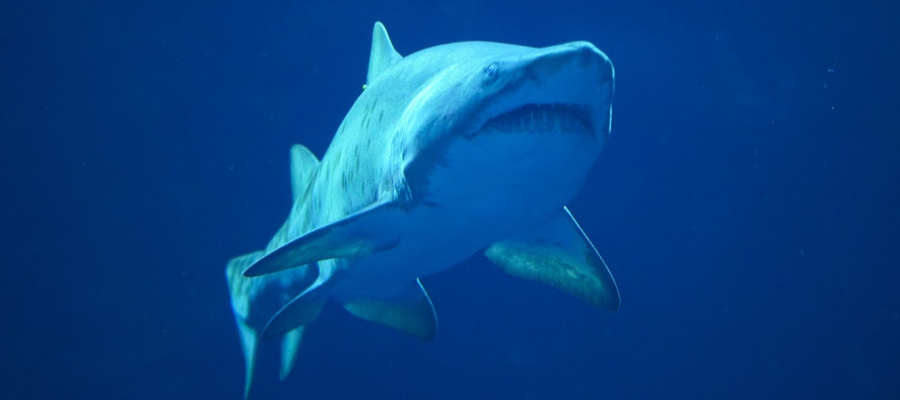Search for a shark with a toothy grin in the Great Ocean Tank (GOT) – meet our sand tiger sharks! These guys have protruding, jagged teeth that jet out from their mouths, easily identifiable compared to the other species in the GOT.
Some sand tiger sharks at aquariums are doing double duty by serving as ambassadors to their species as well as participating in fundamental research. Alongside our Association of Zoos and Aquariums (AZA) partners, we’re working to decipher more information about their health and reproductive habits through a dedicated Species Survival Plan.
Sand tiger sharks have one of the lowest reproductive rates of all shark species. They give birth to just two baby sharks (called pups) after an 8-9-month gestation period, but it isn’t an easy road getting there. Sand tiger sharks have two uteri; the most dominant pup in each uterus will actually fight and later consume all of its weaker siblings until birth, a phenomenon known as intrauterine cannibalism.
That’s why it’s so important for us to study them and help manage their populations. Sharks are instrumental in balancing the oceanic life cycle and we want to do all we can to ensure sharks swim abundant in the ocean.
Just last year, one of our female sand tiger sharks made the journey to Marineland in Florida (Georgia Aquarium’s affiliate) to participate in a breeding workshop and reproductive health exam. These efforts offer AZA institutions valuable insight into the sharks’ reproductive abilities that will hopefully help sustain wild populations.
Watch below to see how we helped move her into her own tank on wheels:
Interested in celebrating the weird, exploring the wild, and discovering the wonderful side sharks? Come see us during Shark Week, July 27 – August 4!


